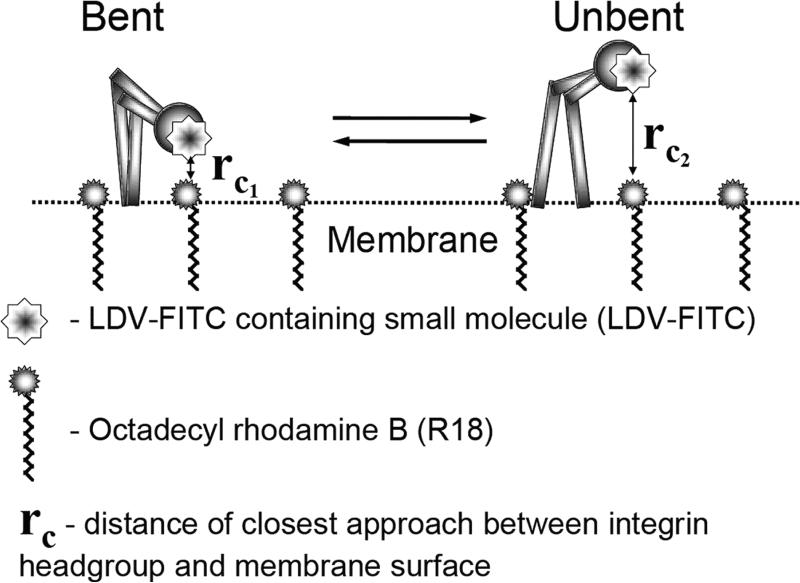Fig. 1.
Schematic depicting the FRET assay for assessing VLA-4 conformational unbending (modified from (1)). Energy transfer between VLA-4 head groups and lipid probes incorporated into the plasma membrane provides a way of studying integrin conformational unbending. The LDV-FITC probe that specifically binds to the head group ofVLA-4 is used as a fluorescent donor at a high enough concentration to saturate all low-affinity resting binding sites. A change in VLA-4 affinity would not affect probe binding. Octadecyl rhodamine B (R18), a lipophilic probe, inserts into the membrane as an acceptor. Upon activation, VLA-4 assumes an unbent (upright) conformation. rC1 and rC2 are the distances of closest approach before and after molecular unbending. Changes in the fluorescence of the donor were measured on live cells in real time at 37°C by flow cytometry.

